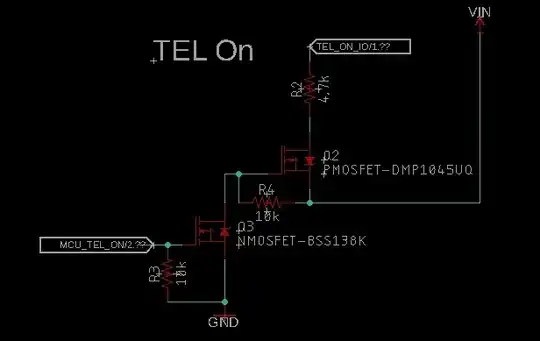First off, let me state that I am pretty new to FETs, so I'm still wrapping my head around the different characteristics.
The circuit below is a switch that will trigger a 12v (VIN=12v) signal to be constantly on, based on input from an MCU (MCU_TEL_ON=3.3v logic level).
The DMP1045UQ P-FET I originally used is wrong for the application because its Vgss is +/-8V.
As such, I've had multiple failures of this part.
I'm trying to source a P-FET suitable for the job (~5mA load, acceptable voltage drop of 0.5v and rise time is really not a factor either) and I'm between the DMP3098LQ and the PMV65XP.
My questions are:
- Either one of these should work, correct?
- The
Vgsgiven my circuit is-12v, right? - What characteristics matter most when selecting a part for this particular job?
